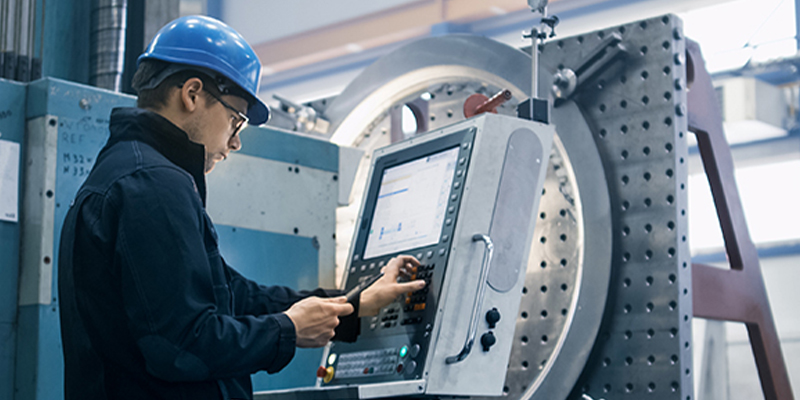

A machine suffering from vibration or leveling issues won’t function at 100% capacity, but what exactly are the signs or behaviors of an out of level machine? How can we identify misalignment problems quickly to prevent bigger issues, such as a potential shutdown, down the line?
Many machines naturally produce movement, and motion in and of itself is not problematic. In fact, the existence of normal action confirms that the machine is functional and productive. However, when there is an ongoing lack of accurate results and the appearance of imperfect work or products, it’s entirely possible that improper level or excessive vibration is at fault.
Is your machine suddenly sounding louder than usual? Grinding as a result of excessively worn ball or roller bearings, drive belts or gears caused by poor leveling or excessive vibration could amplify your machine’s normal operating volume, providing one of the first clues of trouble.
We can laugh about old washers bouncing across basement floors, but a large machine that consistently shifts or relocates itself can be a serious danger in a shop or other operating facility. The possibility of the machine tipping or falling as a result of excessive motion grows if overlooked; plumbing and electrical connects can become stressed; a machine that moves should be investigated as a serious danger, and its leveling and vibration issues resolved immediately.
We mentioned out of spec results above, but its importance bears repeating. While many factors can cause a machine whose primary purpose is to stamp or press to malfunction, over time, the powerful weight and force of action required to produce the desired product can cause it to fall out of alignment. The problem could be worn bearings, or it could be out of level.
As vibration and leveling specialists, we’ve come across a wide variety of situations when a machine that should function properly simply doesn’t. One example we encountered was a refurbished die-casting machine. A perfectly functioning second-hand die-casting machine offers significant savings to its buyer, especially if it has been well maintained. At installation, it may seem as though the machine’s enormous frame is inherently stable due to weight and size combined. This does not mean, however, that it’s acceptable to overlook a thorough leveling check. By foregoing this essential step, the buyer came to doubt the wisdom of his purchase, since this previously perfect machine was now producing flash, causing damage to the mold, and creating a worn parting line.
Initial diagnosis led operators to believe the die or mold seemed to be at fault. Concern grew that the refurbished machine was not the bargain they believed it to be, since repairing or replacing the die or mold is both time-consuming and expensive. As a last ditch option before installing new parts, the company decided to try our solution, which was to first confirm the machine was stable and that vibration was not the culprit.
Sure enough, the addition of wedges allowed the machine to resume its previous perfect performance, not to mention saving the company significant repair costs and downtime.
With this experience in mind, we urge those facing a possible work disruption to consider first the behavior of the machine they suspect to be faulty. Is it suddenly noisy? Is there movement? Is it performing poorly? If any or all of the answers are yes, the fix may be as simple as a thorough realignment.
{{cta(’53b3f271-f7d4-4adc-8bf6-e88af102fa34′,’justifycenter’)}}